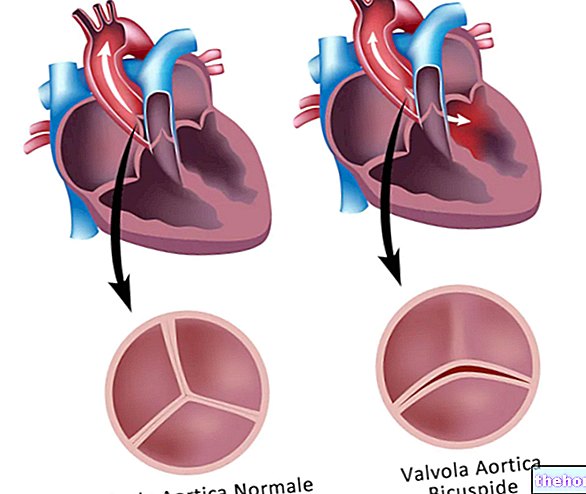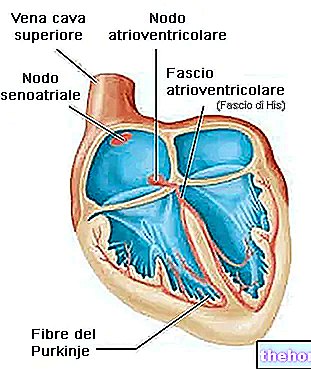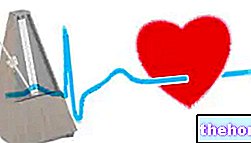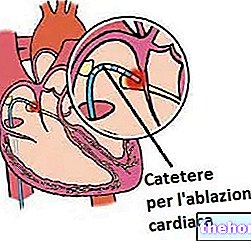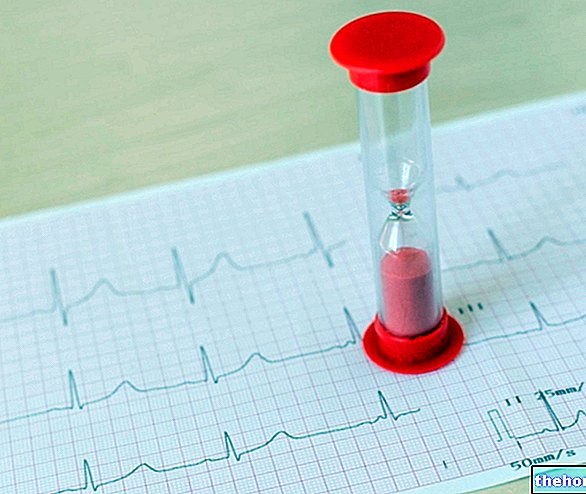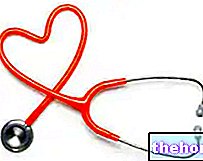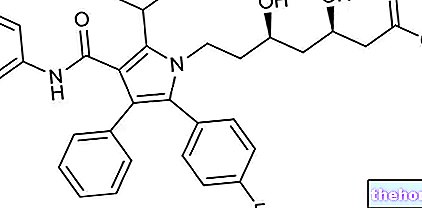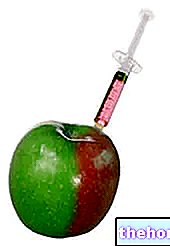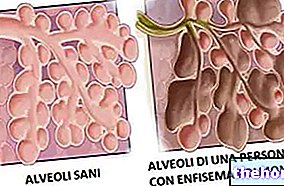
Figure: Cross section of a heart affected by left ventricular hypertrophy. From wikipedia.org
The main triggering causes are: hypertension, aortic stenosis, hypertrophic cardiomyopathy and high-level sports training. Furthermore, overweight, obesity and a certain genetic predisposition to the disorder certainly contribute to the increase in left ventricular mass.
Initially, left ventricular hypertrophy is asymptomatic; then, over time, it could cause dyspnea, chest pain, fainting, etc.
The diagnostic test of choice is the echocardiogram.
Therapy depends on the causes; if adequate, a reduction in hypertrophic myocardium may be observed.
Brief reminder of the anatomy of the heart
Before describing left ventricular hypertrophy, it is useful to review some fundamental characteristics of the heart.
With the help of the image, readers are reminded that:
- The heart is divided into two halves, right and left. The right heart is composed of the right atrium and the underlying right ventricle. The left heart is composed of the left atrium and the underlying left ventricle. Each atrium is connected to the underlying ventricle by means of a valve.
- The right atrium receives non-oxygenated blood through the hollow veins.
- The right ventricle pumps blood into the pulmonary arteries, which lead it to the lungs. In the lungs, the blood becomes charged with oxygen.
- The left atrium receives oxygenated blood, returning from the lungs, through the pulmonary veins.
- The left ventricle pumps oxygenated blood to the organs and tissues of the human body via the aorta.
- Each ventricle communicates with its efferent vessel by means of a valve. Therefore, there are four valves in the heart in all.

Figure: anatomy and blood circulation inside the heart. The right cavities of the heart (including the vessels that reach and depart there) are marked with blue arrows, while the left cavities (also in this case, including vessels) are highlighted with the red arrows.
which constitutes the left ventricle.Is it a symptom or a disease?
In medicine, left ventricular hypertrophy is considered a symptom and not a disease.
WHAT IS MYCARDIUM?
The myocardium is the muscle of the heart.
By alternating a contraction phase with a relaxation phase, the muscle fibers that make it up allow the heart to pump blood to the lungs and to the rest of the body.
The myocardium has the extraordinary ability to generate the impulses for its own contraction by itself, thanks to the sinoatrial node.
The sinoatrial node, located in the right atrium, is the source and center of regulation of the heartbeat.
DEFINITION OF MUSCLE HYPERTROPHY
In light of what has been said about the myocardium, left ventricular hypertrophy is a form of muscle hypertrophy.
The latter is generally defined as "the" increase in muscle volume caused by "the increase in the volume of the elements that make up the muscle (therefore fibers, myofibrils, connective tissue, sarcomeres, contractile proteins, etc.)".
EPIDEMIOLOGY
Left ventricular hypertrophy is more common among people with hypertension, people who are overweight or obese, and those who have particular heart valve defects.
The left ventricle swells due to hypertension, because, to overcome and counterbalance the high blood pressure, it has to perform stronger contractions than normal.
In medicine, stricture means narrowing. When the aortic valve is narrowed, the heart has a harder time pushing blood out of the ventricle.
Hypertrophic cardiomyopathy can affect one (left) or both ventricles.
Risk situations:
- Suffering from hypertension
- Being overweight or obese
- Presence of aortic stenosis
- Genetic predisposition to left ventricular hypertrophy
- Practicing prolonged endurance or power sports
- Cardiac disorders of various kinds (e.g. mitral insufficiency)
Left ventricular hypertrophy is a condition that sets in gradually.
In its initial stages, in fact, it is often asymptomatic (i.e. free of obvious symptoms and signs). Then, as the myocardium swells further, it begins to cause the first problems.
The classic expressions of left ventricular hypertrophy are:
- Dyspnea (or shortness of breath)
- Chest pain, especially after physical activity
- Palpitations
- Dizziness
- Fainting
WHEN TO SEE THE DOCTOR?
If even after a little effort you feel strange chest pains or shortness of breath, or if you are frequently subject to palpitations, it is good to contact your doctor immediately for investigations.
Furthermore, anyone who leads a lifestyle that predisposes to hypertension (smoking, wrong diet, genetic predisposition to this disorder, etc.) is required to periodically undergo a precautionary heart check.
COMPLICATIONS
The "structural alteration of the left ventricle involves a" functional alteration of the heart.
In the long run, left ventricular hypertrophy can cause the following complications:
- Heart failure (or heart failure)
- Arrhythmias of various kinds
- Heart attack
- Myocardial ischemia
- Sudden cardiac arrest
A very important aspect of the diagnosis is to establish the precise triggering causes.
ECHOCARDIOGRAM
The "echocardiogram is an ultrasound examination that shows, in detail, the anatomy of the heart and any anomalies of the latter." It allows, in fact, to identify interatrial and interventricular defects, valve defects, myocardial malformations (including dilations of the heart cavities and thickening of the walls) and the difficulty of pumping the heart.
The echocardiogram is a simple and non-invasive examination.
The type of therapy to be adopted in case of left ventricular hypertrophy depends, to a large extent, on the causes of the hypertrophy itself. In light of this, it is explained why it is fundamental, during the diagnostic process, to trace the reasons for the onset of the anomaly.
Treatment of the causes has also been shown to be effective in reducing the left ventricular mass affected by hypertrophy.
TREATMENT IN CASE OF HYPERTENSION
If the cause responsible for left ventricular hypertrophy is hypertension, we recommend that you: exercise regularly; adopt a low-fat, low-sodium diet; do not smoke; do not take excessive doses of alcohol; and finally take hypotensive drugs (i.e. reduce blood pressure in the arteries).
The main medicines useful for hypotensive purposes are:
- ACE inhibitors (or angiotensin converting enzyme inhibitors). The most commonly used ACE inhibitors are captopril, lisinopril and enalapril.
- Angiotensin receptor blockers (or sartans). The most commonly used angiotensin receptor blockers are losartan and valsartan. They represent a good alternative to ACE inhibitors, especially for those who do not tolerate the latter.
- Thiazide diuretics. By increasing diuresis, they promote the elimination of sodium from the body and the reduction of blood pressure.
- Beta blockers. They work by slowing the heart rate. Among the most used beta-blockers, are mentioned atenolol, carvedilol, metoprolol and bisoprolol.
- Calcium channel blockers. They work by keeping the heart rhythm stable. The most commonly administered calcium channel blockers in case of left ventricular hypertrophy are: amlodipine, diltiazem, nifedipine and verapamil.
TREATMENT IN CASE OF AORTIC STENOSIS
If the origin of left ventricular hypertrophy is aortic stenosis, surgery may be required to remove and replace the malfunctioning aortic valve.
Alternatively, and if the conditions of the heart allow it, there is also the possibility of repairing the valve defect, through a "valvuloplasty operation.
According to some statistics, after valve replacement, the left ventricular mass decreases and returns almost to normal within 18 months.
SOME ADVICES
In fact, losing weight, adopting a low-sodium diet, avoiding fatty foods, drinking moderate amounts of alcohol (or not drinking at all), and exercising regularly are valid recommendations not only when the cause of left ventricular hypertrophy is hypertension, but even when the causes are other.
it should be less than 130/80 mmHg (N.B: mmHg is the "unit of measurement of blood pressure and reads" millimeters of mercury ").Finally, it is good practice to limit the consumption of alcohol to the minimum allowed.

